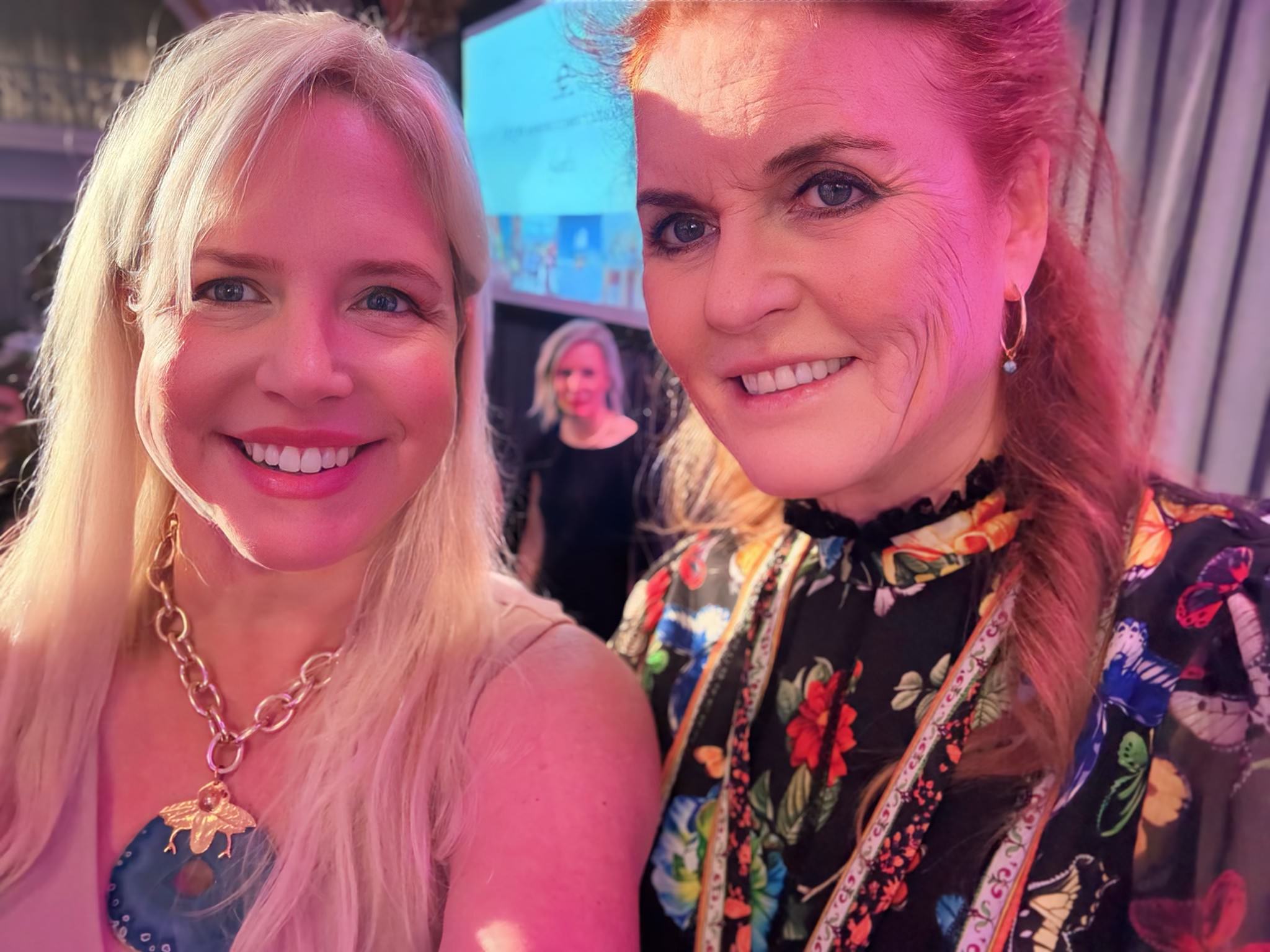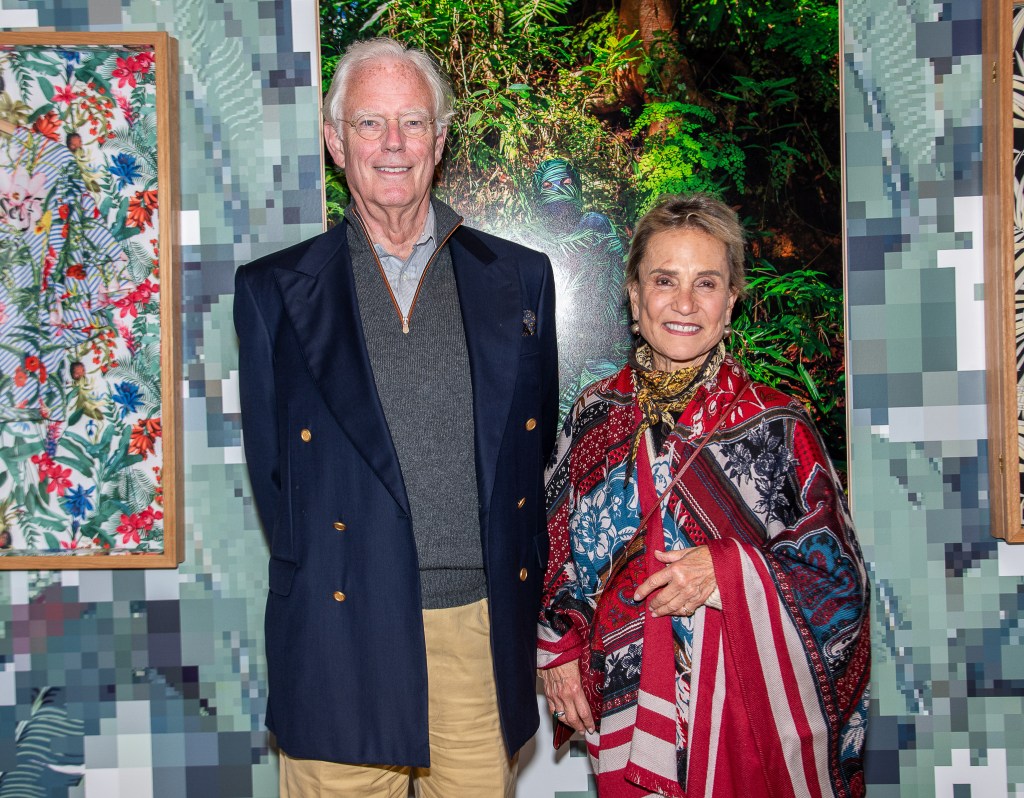How Lovelace Advisors Is Funding the Alternative Energy Future Today

It’s a summer day in the Hamptons and Laura S. Lovelace is full of energy.
She has just returned from Washington, D.C., having wrangled with a U.S. Senate subcommittee, and is happy to be back as she talks about a wide range of energy projects, from critical minerals to geothermal to solar shingles and solar shades deployed by Marriott. You could say she specializes in financing the future. And it’s a phrase she likes, although the projects she helps are very much in the present.
“It’s about funding the future. And getting across the valley of death,” she says of taking alternative energy to profit and product. “We have a largely fossil fuel economy. You’re trying to add cleaner, greener energy to this. It’s important to utilize the myriad incentives that are available.”
Lovelace, founder of Lovelace Energy Advisors, has been a key player for many commercial energy projects and companies as a specialist in finding funds and overcoming policy hurdles for alternative energy.
She grew up in Texas, graduated from Dartmouth College as a Presidential Scholar and earned her Master’s Degree in Business Administration from the Tuck School at Dartmouth.
She was named to the Hamptons Power List Award by Schneps Media (she works in the actual “power” industry) and mixes a traditional finance background with alternative energy. Lovelace worked in the Institutional Debt and Equities groups at Goldman Sachs & Co. and then held positions in the White House Office of Policy Development and the United States Department of the Treasury, working with the White House, Department of Energy and Department of Commerce on the National Energy Policy Task Force.
She has helped bridge the “green gap” to fund businesses across the nation, helping clients obtain more than $1 billion to develop new technology and fund alternative energy and energy efficiency projects. She assists companies by getting the financial fuel they need through federal and New York State funds (grants, loans, appropriations, tax credits) as well as investment in the form of venture capital and private equity.
“I’ll do these anywhere in the country but specifically site my clients in states with supportive political delegations,” she says, looking up on a clear day at a sun that fuels not just fun at the beach, but energy and the economy. “It’s the private side of deployment, private investors, project developers, and businesses which commercialize clean energy innovations. They need help navigating government intervention and incentives. It’s not just putting solar panels on roofs.”
A TRACK RECORD TALKS
While attention has been placed on a residential energy boom, the reality is that the nation’s energy evolution, or revolution, goes far beyond that. It includes large projects, new technologies and ways to increase energy efficiency as well as improve ways to interact with the power grid infrastructure. These require funding or policy assistance to reach the market or simply be realized. That’s where Lovelace, bringing her financial acumen, political experience, connections and knowhow, comes in.
Lovelace brings good energy to the table in just about every way, dividing her time between Southampton and D.C., building bridges between government and private funds. These projects generate jobs as well as power; she specializes in matching clients with the money needed to proceed pre-revenue or for big clean energy with upfront costs.
Lovelace, however, doesn’t just talk the talk, as is sometimes the case with alternative energy. She has walked the walk from Texas to Washington and now New York, helping many projects get the funds that made them possible. She helped a low-carbon project developer obtain $200 million in tax credits through Congressional support and another to obtain a Federal loan guarantee for several hundred million.
“The government is monolithic,” she says. “That can make it difficult for private equity investors and entrepreneurs who need to stay nimble. I help my clients manage this.”
For Lovelace, it’s not always the amount of funding she helps obtain that matters. It’s often at a critical phase for her client’s business.
On the smaller side, Lovelace was essential in a $3.6 million award from the Advanced Research Projects Agency for Energy for AutoGrid, where less than 2% of applicants were selected. This added non-dilutive funding at a critical time during their venture capital raise. AutoGrid provides software to manage DERs (distributed energy resources) and is now commercial, having been recently acquired.
“I have a unique background. I grew up in Texas with a lot of oil and gas,” she says. “But I very much believe in adding sustainable energy to our economy.”
In a partisan world, she has found common ground in solar, geothermal, electric vehicles, energy efficiency and more, doing projects and deals with the Bush, Obama and Biden administrations. While some debate climate change, she sees everything from electric vehicles to solar panels as ways to diversify the energy supply and obtain economic incentives.
She views the keys to her success as her ability to build relationships and stick to the business aspects.
“If I can facilitate revenue, jobs and lower pollution, I’m in. I don’t force ‘clean and green’ as an ideology,” she says. “To become economically viable, we need subsidies, and we have them. To get tangible carbon reductions we must deploy existing innovations — but it must make business sense for my client.”

A NEW YORK STATE OF MIND
Deciding where to site your business or project is a key decision in obtaining funding, whether it be Texas, Oregon, California or New York, which brings special benefits. The New York State Energy, Research and Development Authority (NYSERDA) can provide incentives, but there are other assets as well.
“New York is a great state to develop projects and commercialize technologies,” she says. “You need to get them out of the lab, out of demonstration and into the mass market. That’s where funding comes in.”
Whether you want or need private or government funding or both, she says New York provides good opportunities because of state funding that can be combined with federal incentives.
“It’s not just renewables. It’s in energy efficient devices for the grid,” she says. “And critical minerals essential to developing different components for batteries used for storage and electric vehicles.”
New York helps bridge the “green gap” with the state’s Green Bank, the largest in the nation. The Green Bank is a state-sponsored investment fund that finances sustainable energy. It provides government loans that can help supercharge investments.
CRITICAL THINKING
Lovelace emphatically states that the United States needs to be more energy independent and less reliant on China.
She is working on federal support to bring critical minerals processing back to America through her client, Climate Commodities, which works with Brown Fused Alumina (BFA.) It’s critical because this mineral is used to make steel, aluminum and glass for products that sustain our energy sector.
“There’s a national security aspect to it. Our government used to stockpile BFA and now China controls the majority of suppliers,” she says. “Most Americans don’t realize the severity of this issue. I’m working to change that through Congress and the White House.”
A LIFE IN ENERGY
In some ways Lovelace is an unlikely preacher of the gospel of alternative energy, and in others, the perfect fit. She grew up in Texas, the capital of the nation’s traditional energy economy, but even there, her family was involved in alternatives. Her uncle owns Lily of the Desert, a natural nutrition and organics company.
“Once I went to Dartmouth, that introduced me to my love of nature, hiking and the environment,” she says. “That was an important pivot point in my life.”
She then worked on Wall Street for Goldman Sachs at 85 Broad Street, near the New York Stock Exchange, where she was when 9/11 occurred. She saw the terror and the tragedy as New York and the nation came under attack.
“That was a turning point in my life. Seeing the resilience of New Yorkers. I am a Texas girl, but that was the period where I felt like I became a New Yorker,” she says. “The resilience of the people of New York. It resonated.”
Those are moments she will never forget, as she went from staring at screens used to trade to an escape to safety, as the air filled with paper and debris the day destruction hit downtown
“The first plane was weird. The second plane was when the building shook. That’s when we knew we were under attack,” she says. “We evacuated the building. The sky became dark. We exited the building. And some time later, the towers started to fall.”
Rather than shifting to remote in the following days and weeks, she soon found herself walking through the ashes to work. “We made a point to sit and support local cafés,” she says. “We supported local businesses. We were so defiant.”

GOING NATIONAL
Lovelace was already coming out to the Hamptons, but soon went from Wall Street to Washington, working for the U.S. Treasury in the Bush administration, where she was placed on the National Energy Policy Task Force as a representative of the Treasury department.
“That was my transition into energy,” she says.
Lovelace credits two friends with inspiring her to match energy and finance, including Kate Brandt, now chief sustainability officer at Google, as being a “female inspiration in her industry.” The other is Jigar Shah, a member of the Biden administration who wrote the book titled Creating Climate Wealth.
“He inspired me to see the economic value in clean tech,” she says of economic and environmental benefits.
She steers clear of mandates and says she doesn’t “try to shoehorn my clients into anything.” But she brings an expertise as essential, as certain minerals are, to cross the economic desert before companies can reach the promised land of projects or products and, if all goes well, profit.
Lovelace’s background helps her deal with agencies, as was the case with Altarock, which has a geothermal project in Oregon that needed approvals from the U.S. Departments of Agriculture, Energy and Interior.
“You have multiple agencies approving the same project. We had three agencies involved. Two approved. One was holding out,” she says. “You’ve got to get permits fast-tracked or investors might start to pull project funding.”
She helped them get approvals from all three, enabling the project to proceed rather than dying in that economic valley of death.
“You cannot have permitting drag on too long. Congress and the White House can be helpful,” she says. “They want projects to succeed.”

NATURAL POWER
These days, she divides her time between D.C. and Southampton. But in her spare time, she nurtures her love of nature as a source of inner regenerative power. She says she developed a love of hiking and the environment while at Dartmouth. She and her father, for instance, have climbed the Rocky Mountains, including the “fourteeners,” mountains at least 14,000 feet above sea level.
“That’s exhilarating and challenging,” she says. “Once you get above 12,500 feet, the oxygen level decreases significantly.”
She now sees Lily of the Desert, her uncle’s business, which makes organic aloe products, as a connection between her past and the future.
“I have an organic background in my family,” she says of her character as a mix of Texas, New Hampshire and New York.
While the green mountains of New Hampshire helped her draw closer to nature, Lovelace knows her D.C. link is crucial as a power center to help the environment.
“D.C. is the power center for so much of this,” she says. “I use government financing to complement private financing which enables commercialization.”
Lovelace also talks about her great-grandmother, a devoted mother of nine whom she says was the first female sheriff in Texas, in Dallas, during the 1920s Prohibition era.
“I come from determined stock. I come from get-it-done stock,” she says. “She succeeded my great-grandfather who was sheriff.”
She notes that his campaign slogan when he ran for sheriff in the 1920s was “a real man for a man’s job.” Her great-grandmother held the same job, with a different slogan. Lovelock still has her golden badge and, in a way, continues her path of taking on
challenges.
“I have followed in her footsteps,” she jokes, because “Congress is like the Wild West.”
How does one remove the partisan aspect, appealing to Republicans and Democrats as well as private industry, from aspects of alternative energy? Energy is essential and today alternative energy, hardly an alternative, has become an essential part of the mix.
“Because power demand is increasing, we’ve got to add efficient clean energy to supplement baseload power. That’s doable with current incentives,” she says as the sun shines in the Hamptons sky. “We’re talking about lowering pollution and creating jobs. We need everybody on board. We’re building relationships.”
Contact: info@lovelaceadvisors.com
-PARTNER CONTENT









